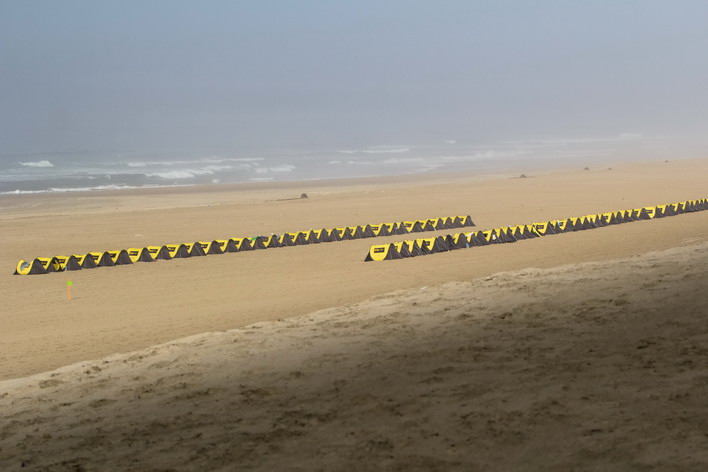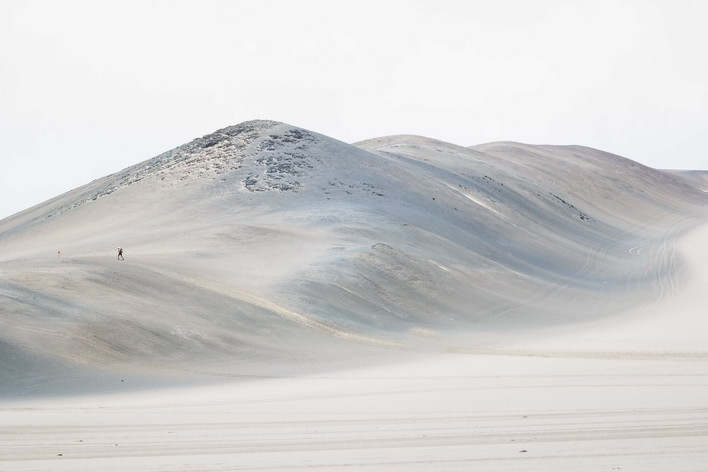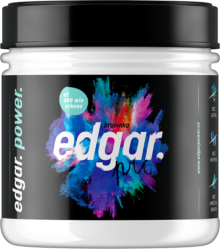Half Marathon des Sables Peru
“My autumn schedule is quite free”.
That’s exactly what I said this October. And then it happened. A trip to the Bob Graham Round, a couple of festivals, and a trip to Peru at the end of November – I was invited to the Half Marathon des Sables (HMDS) race in Peru by WAA. And when in Peru, I am going to visit some mountains as well. And a three-week trip was born.
There was very little time to prepare for the race, so it’s hard to speak about any specific preparation. We adjusted the training a bit. A week before the race I had a 50k test run. I felt better than good. My food strategy was already sorted from Kalahari and desert gaiters were also taken care of. So I felt satisfied and looking to another adventure.
What is HMDS?
Many of you may have heard about MDS – Marathon des Sables – a 7-day, 6-stage race in the Sahara desert in Morocco covering 240 km in total. And the same organizer derived its clones in Peru and Fuerteventura, but only a “Half”. Overall, it’s 4 days and 3 stages. 30 km, 60 km, day off and another 30 km. Halfmarathon covering 120 km. Makes sense, right?

An important aspect in most of these desert races is self-sufficiency. At the start of the race you take everything you need, including food, and you have to manage until finish. The organizer provides a room in a tent and 5L of water every day. It is easy to see that every gram counts, and proper diet is key.
No desert is the same
I have finished a couple of races in it is fascinating how different each desert can be. So much variety! In Kalahari, South Africa, there is almost no loose sand, but huge canyons and rock formations, but much more heat. Yet, there are shrubs and some animals actually live there. Gobi is at a higher altitude, very rocky and at night it is quite cold. The Ica desert is the driest of and totally dead. No animals, no plants, no life at all. At the same time, it is located directly on the ocean, often the dunes were covered with haze, fog was hovering over the desert, but it never rains there. Bizarre.



Race factory
MDS is a global brand with around 2,000 participants every year, sold out a year in advance and a it is a real mass event. Half is much smaller, about 600 people. Even so, tent city is big and everything is designed for crowds of people. After an overnight trip from Lima by bus and then some military trucks we arrived at the place, handed in our luggage and since then we were on our own.
I was very satisfied with the first day. I started just about right, pairing up with other runners, powering over the dunes, and in the middle flat and downhill part I climbed a bit in the ranking, just before the finish I started to melt. Simply said, good pacing. Much more loose sand than expecting and felt as if I was not making any progress. High effort and lousy 6“/km on flat parts, even slower in climbs. Good start, I believed that I would improve my position in the next 60km stage.





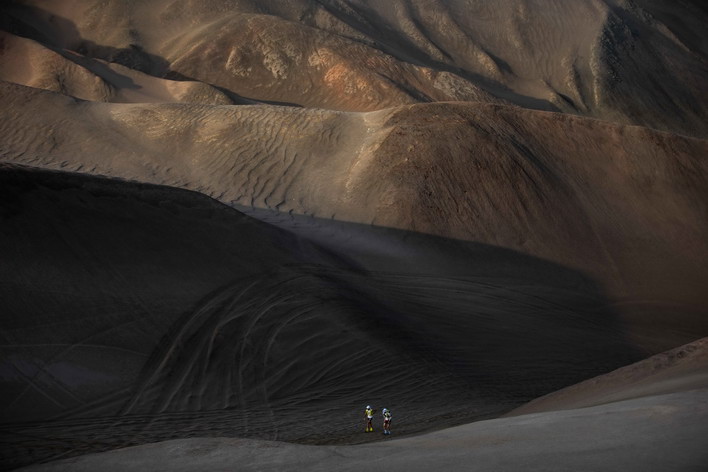
Second day we started after five in the morning, but today did not go well at all. Heat took over soon, no wind at all and I started to boil. Quite anticipated scenario to be honest. Two things work – pour some water and/or slow down. I cooled myself a bit and I did not bonk completely, but I lost a lot of time. My legs would run faster, I kept trying, but the heat was too much for me. Except for the last 10 km, where the wind picked up. It took me 6:38, and I dropped to 26th place.


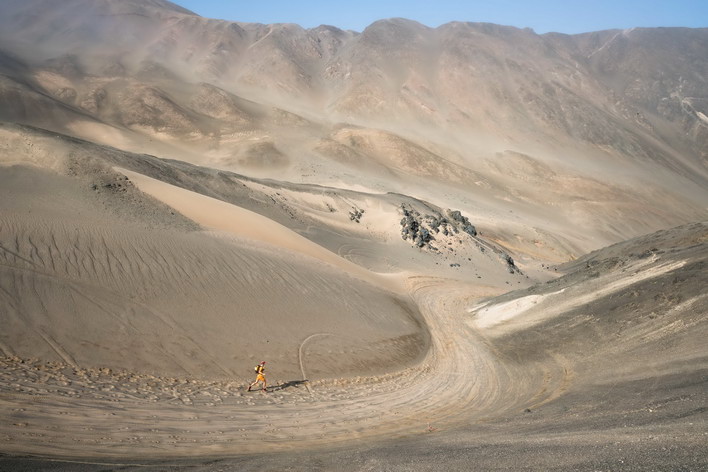

The last day was very similar – a lot of heat from the start, but almost no loose sand. This stage had only 21 km and went mostly along the coast. Two racers got past me, I overtook one, resulting in 27th place overall.




Is it good or bad? You choose … It’s not my type of race and I knew it. It is fast, short, runnable and it’s hot. There is no reference point for the results. There were only 2 people in the start list I knew prior to the race. Simply said, a completely different group of competitors is racing these races. It does not overlap with those racing ultras. I’m basically only visiting here. And as a visitor it was not bad.
From my point of view, I have to be satisfied – especially with the first stage. I couldn’t have done it much more better. Actually, I have to be satisfied also with the second stage. When your physical condition is not a limiting factor, but it is other factors, it leaves you wondering if you could have done better. I was wondering too. When reached the finished and I could do six steps at a time, not more, I understood that I had left everything there. Given this, I have to be satisfied. To expect that with my ultra training I would thrive among in these races, among specialists, would naive, at least. For a better result, I would have to completely change the training, train short and fast sessions in the heat etc. I am not planning to do this, I still enjoy ultras more.



Life in the desert
Your experience on such a a race is influenced mostly by two factors. What the organizer does (not) provide what people are around you. All the time you share either a large tent or a group of small tents with the same people. In addition, you run only a few hours a day, the rest of the time you live in the tent city. When the chemistry works, you will enjoy an experience that you will never forget. If the chemistry is not there, you will also never forget, even you much rather have forgotten. A Polish girl, a Romanian and a Macedonian couple shared our six-tent circle. Definitely a coincidence… but the chemistry worked.


Gear:
Food and equipment I had already sorted from Kalahari, so I dared to reduce it to the absolute minimum. You can do it, if you have complete confidence in the gear you are taking with you (and you don’t take anything else). Everything must be as light as possible and must fit. Apart from mandatory equipment, I had only a cell phone, pen, toothbrush and a antiseptic spray for my throat.
As for backpack, I took Ferrino X-Track 15 , I took the lightest shirt I had – Inov8 Base , I took Inov8 RocLite G 275 shoes.
Peru is really close to the equator and the sun is very strong there (and it would be even stronger later, as I would be heading to high mountains ), so it was vital to protect my eyes. I was relying at WileyX Titan with gasket. Garmin Fenix 5x last all three stages without recharging.
Food:
Food is the same – absolute minimum. 600g of Edgar power drink covered all the running stages, 6 bars with protein from crickets and 400g peanuts was enough for me for three and a half days. On top of this, I made a recovery drink from Edgar and Aminodrink to drink after finishing each day, I was always looking forward to this as it was very tasty. In addition, 200g of gummy bears to raise the spirit. To sum it up – 1500g of food, about 27000 kJ for 120 km and three and a half days. It worked great. So much for food, so much for desert, now for something completely different. Going for mountains!
Photos courtesy of WAA Ultra.



